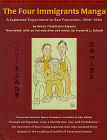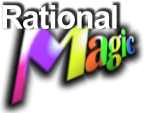

| The Four Immigrants Manga: A Japanese Experience in San Francisco, 1904-1924. By Henry (Yoshitaka) Kiyama. Translated by Frederik L. Schodt. Berkeley, CA: Stone Bridge Press, c1931, 1999. 152p. $12.95. ISBN 1-880656-33-7. |

|
GENRES: AUDIENCE: SYNOPSIS:
The book has a long introduction by Schodt that sketches the history of this book and his attempts to find a copy and translate it. It was actually written in both Japanese and English, with the Japanese characters speaking Japanese among themselves and English to the Americans (who also spoke English, obviously). What Schodt did was to translate the Japanese into "fluent" English and to leave Kiyama's original "fractured" English in place elsewhere (including in the mouths of Americans). The result is a sort of reverse pidgin that actually works better than it might sound here. The book also reprints the front matter from the original 1931 publication, including introductions by various Japanese luminaries and artists of the period (such as Chiura Obata and Kaname Wakasugi). There are also an afterword about what happened to Kiyama after he returned to Japan; notes and commentary about various historical and social things in the panels (e.g., background on the crisis over Japanese school children; and a bibliography of books about the Japanese immigrant experience and other pertinent titles. EVALUATION: The four main characters always come off as individuals: quiet, art-driven Henry; confident Fred; brash Charlie; and good-humored Frank. The latter two drive the book, though Fred reemerges as the successful millionaire farmer about two-thirds of the way through; Henry is a relatively rare sight, presumably distracted by his art studies. (For example, when Charlie encounters Henry at the Exposition, Henry wants to look at the statues, and Charlie slips away to go to the teahouse.) One thing that really comes through in this book is the strong sense of humor that Kiyama and his friends (and the other Japanese immigrants) kept throughout their struggles. Some of the things that happened to them were really quite terrible, such as when Charlie and Frank were bundled onto a truck at gunpoint and driven out of Turlock with a warning never to return, or when Charlie's request to gain his precious citizenship was denied even after he'd fought on behalf of the U.S. Yet the characters can still dismiss their bad fortune with a wry sentence or even a joke. There is even a bit of self-referential humor, as when Fred reassures a worried colleague that "Not to worry! The cartoonist of this strip'll fix things for you!" Although Kiyama was quite a competent Western-style artist (several of his life drawings are reproduced within these pages), the art in Four Immigrants was deliberately crude and cartoony, in the style of American cartoons of that period. This was apparently his major nod to the typical comic, and one is reminded of art spiegelman's similar decision to draw simple panels for Maus. (Seems like there might be a paper in this for someone....) Most of the humor in the book is verbal, not visual, but there are a few moments of whimsy here and there, such as the little lovey-dovey animals cavorting in the background while Fred muses on whether to send for a wife. One minor problem with the book is the time frame. Though we know that events are progressing in a linear fashion, it's not always clear that a considerable amount of time may have passed between stories or even between individual panels. Also, in another minor problem mentioned by Schodt in the introduction, Charlie's father is said to have died in an early episode, but Charlie mentions getting a letter from him much later. Certain aspects of the book have to be taken in historical context. Everyone makes racist remarks about everyone else: whites about Orientals, Orientals about whites, Japanese about Chinese, Chinese about Japanese, etc. Black and Chinese characters are drawn in the old stereotypically nasty ways (i.e., bulging eyes and thick lips for the former, pigtails and "coolie" clothes for the latter). As stated earlier, some of the English is the fractured and misspelled stuff originally written by Kiyama. Schodt left it untouched because he hopes readers will "imagine what it might be like to live in a sea of foreign language and to appreciate the charming bilingual format in which Kiyama's book was originally written." For me, the device worked, and it adds to the "alternative" air of the entire project. However, readers unaccustomed to the comics format will likely be baffled by it. As well, the art will be offputting to readers who go for the slicker modern manga--which is a shame, because this book is considerably more interesting than most of today's overdrawn translated manga. Recommended for anyone interested in Japanese-American history, comics-format biography, comics history, olde San Francisco, or the immigrant experience in general. Might not be appropriate for kids for a variety of reasons (art, racial portraits, obscure subject), but I'd love to see this book used as an adjunct in Asian-American history classes at the high school and college levels. |
Return to Rational Magic Home
